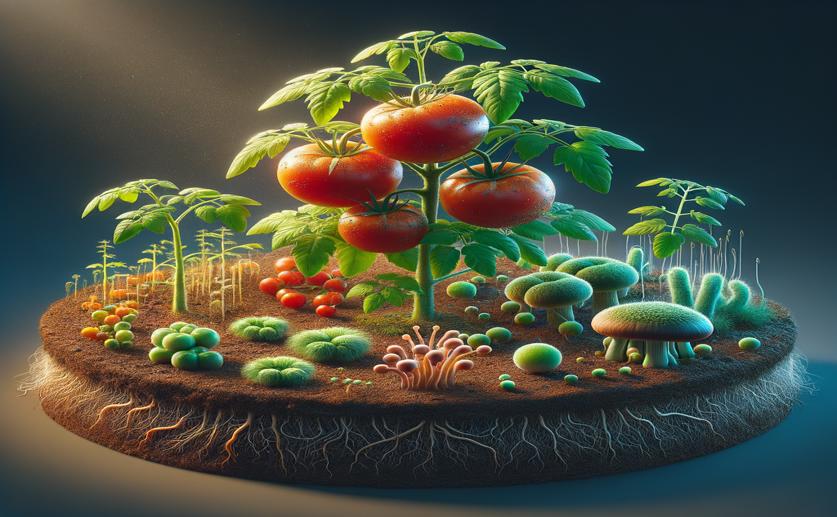
Improving Tomato Plant Health Using Mutant Fungi and Bacteria with Radiation
Greg Howard
3rd August, 2024

Image Source: Natural Science News, 2024
Key Findings
- The study by NSTRI explored using Trichoderma spp. and Bacillus spp., including their gamma radiation-induced mutants, to control root-knot nematodes in tomato plants
- Bacillus spp. were effective in lab tests, reducing nematode egg hatching by 16-45% and killing 30-46% of juvenile nematodes
- Greenhouse trials showed that mutant isolates combined with chitosan reduced nematode reproduction by 94%, significantly lowering plant damage
AgricultureSustainabilityPlant Science
References
Main Study
1) Optimizing sustainable control of Meloidogyne javanica in tomato plants through gamma radiation-induced mutants of Trichoderma harzianum and Bacillus velezensis.
Published 1st August, 2024
https://doi.org/10.1038/s41598-024-68365-z
Related Studies
2) Microbes vs. Nematodes: Insights into Biocontrol through Antagonistic Organisms to Control Root-Knot Nematodes.
3) Role of Trichoderma as a biocontrol agent (BCA) of phytoparasitic nematodes and plant growth inducer.
4) Plant growth-promoting microorganisms as biocontrol agents of plant diseases: Mechanisms, challenges and future perspectives.



 13th July, 2024 | Jim Crocker
13th July, 2024 | Jim Crocker